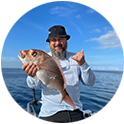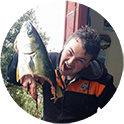
Everyone wants abundance, we just need to agree how to get there.
Good Fishing is a movement set up by some fishos who understand their environment well, who want to enjoy fishing in a responsible way, and ensure that the Hauraki Gulf thrives.
Recreational fishers are well-placed to take a leadership role in fixing the gulf. We have more to lose, more to gain and more to contribute than any other group.
“Having fished all over the world I know how good our New Zealand fishing is. I'm keen to do my bit to have it stay that way.”
MANUEL GREENLAND

It’s hard to notice changes from the surface…
But it’s obvious underwater. Nordic Reef off Leigh was once one of the most productive reef habitats in the outer Gulf, but kina have demolished the kelp forests, leaving a wasteland. It’s a scene that is obvious across the gulf.
Are you seeing what we’re seeing?
Some of our favourite fishing spots are turning into deserts. The population of kina has exploded on many reefs in the Hauraki Gulf, mowing down the kelp. On the flats, 11-arm starfish are swamping shellfish beds. It’s been obvious in the inner gulf for years, but now there are huge barrens on the outside of Little Barrier, Tiri, the Tutukaka Coast, around Great Barrier, even at the Mokes. It’s got us fishos worried.
“I have represented New Zealand competition angling internationally, and fished all over the world, but my love of fishing runs deeper. I believe that we are all connected through water and our taonga needs our help. I want to see the mauri of the gulf restored.”
BELINDA THOMAS

The epicentre
The Noises has been fished hard for a century. It used to have hāpuku and schools of trevally, but now the fishing is hard going and the kelp forests have been demolished by kina.
What’s going on?
Crayfish were the main predator of kina, but they’re pretty much gone from the Hauraki Gulf today—there are so few that scientists call them ‘functionally extinct’. Big snapper eat kina too, but there are far fewer big ones around.
The result is that many reefs no longer support the fishery as they once did. This is called trophic cascade, and it’s a sign that things are wildly out of balance.
RED ROCK LOBSTER AT LESS THAN 1% OF NATURAL ABUNDANCE (STATE OF OUR GULF, 2020). AVERAGE SIZE OF SNAPPER IN PRE-EUROPEAN MIDDENS, 50CM (LEACH F, 2006)
“Fishing’s been a lifelong journey for me—I’m part of GoodFishing for a no-bullshit, fact-based response to building a better fishery.”
WAYNE DOWNER

Tiritiri Matangi
Here’s what it looks like out the back of Tiri. This used to be a hotspot for crays, now they’re gone, and though the snapper numbers are still reasonable, the lack of big resident fish mean the kina are taking over. The kelp has been reduced to isolated patches. But it’s not the kina that are the problem, it’s destructive practices.
We can fix this
Over hundreds of years, recreational and commercial fishing have played a part in the decline of the fishery, as has sedimentation and pollution.
The government’s SeaChange proposal presents an opportunity to make meangingful change. Recreational fishers are best placed to take a leadership role in this, which will put pressure for change on commercial fishers too, if we get it right. There are lots of stakeholders, but all of them can agree that a healthy, abundant Hauraki Gulf is in everyone’s best interests. It’s time to stop the finger-pointing and fix it.
2018 ESTIMATED RECREATIONAL TAKE OF SNAPPER 2068 TONNES, 2018 COMMERCIAL TAKE 1096 TONNES (HARTILL, 2020 IN PRESS).
“There are massive changes underway in the Gulf. I’m part of GoodFishing because I want a seat at the table to be part of the fix.”
DANIEL TIRIA

It’s complicated, but recreational fishing has played a big part.
The charter boat Florence Kennedy II returns to Auckland with more than 300 snapper caught by 48 anglers in a four-hour outing into the Hauraki Gulf, 1958.
Fix 1: Fish smarter
Most fishos dumped their scallop dredges years ago, but there’s more we can do to reduce our impact. First, take what we need for a feed, not for the fridge. If catching to release, fish in water less than 20 metres deep, use circle hooks and release within a minute. Avoid destructive fishing practices like dredges, set nets and set lines where the fisho doesn’t get to make a decision on what they catch.
Target the pan-sized fish, not the breeders—a large fish produces 30 times more eggs than a small one. It’s better for the fishery to leave the big fish on the reef. Probably best to lay off tarakihi, trevally and flounder too—they’re at at dangerously low abundance. Leave the crays alone—every one of them is a valuable worker for the reef habitat.
A 25CM FISH PRODUCES 80,000–300,000 EGGS PER SEASON, WHILE A 50CM FISH PRODUCES 4.5–6 MILLION (CROSSLAND 1977A, 1981B). ONLY 4 OF THE 15 COMMONLY CAUGHT FISH ARE AT SUSTAINABLE LEVELS (STATE OF OUR GULF, 2020).
“I’m part of GoodFishing because I want to give my son a better fishery than I received.”
EDWARD SCHARENGUIVEL

Destructive fishing practices should be banned
Commercial fishers can still bottom trawl, Danish seine, dredge and purse seine in most of the Hauraki Gulf. The SeaChange proposal will restrict this, but not ban it. It’s obvious to everyone who loves the gulf that these are destructive fishing practices that have no place in a national park of the sea.
Fix 2: Fix commercial
Today, a reduction in take from the recreational fishing community will lead to an increase in abundance, which will inevitably increase the Total Allowable Commercial Catch. This is not only patently unfair, it is also a handbrake on fixing of the fishery.
If recreational fishers act to improve the fishery, it shouldn’t be swallowed up by commercial fishing. Likewise, commercial fishers shouldn’t be allowed to use destructive fishing practices like bottom trawling and Danish seining in a national park of the sea. We support the work Legasea has done in this space and look forward to a common-sense reform of the Quota Management System.
“Fishing is my passion, profession and livelihood. I’m here because I want all three to be richer.”
LUKE DAVIS

Goat Island, Leigh
There are places that are still intact. Just up the coast from Nordic Reef is Goat Island—New Zealand’s first marine reserve. It used to have big areas of kina barren, but has now recovered. Larvae from these fish has been traced 40 kilometres away—a sort of fish pump for the rest of the gulf.
Fix 3: We need to talk about protection
The recreational fishing community has opposed marine protection for decades… with good reason. We’re afraid it’s going to lock us out of our favourite fishing spots, and that it will simply move fishing pressure elsewhere—but this doesn’t account for the incredible productivity of protected areas.
We know that if set up properly, reserves can be fish pumps that benefit the fishery around them—there will be a lot more fish, more than making up for displaced effort. Protected areas have been proven to work… really well in some places.
It’s time for a grown-up discussion about the pros and cons, and how protection can be incorporated in a way that is sensible, representative, and benefits the fishery. Our ideas should be part of the discussion, we should have a seat at the table.
6 SNAPPER EGG PRODUCTION ~18X HIGHER IN MARINE RESERVES (WILLIS ET AL 2003). SNAPPER LARVAE SETTLE UP TO 40KM FROM MARINE RESERVES (LE PORT ET AL. 2014). SNAPPER ABUNDANCE BETWEEN 5 AND 8 TIMES HIGHER IN MARINE RESERVES (ALLARD, HAGGITT, SHEARS)
“I love fishing, and fishos should be leaders in the recovery of the Gulf. We have more to gain and more to lose than anyone else.”
MIKEY SMITH














